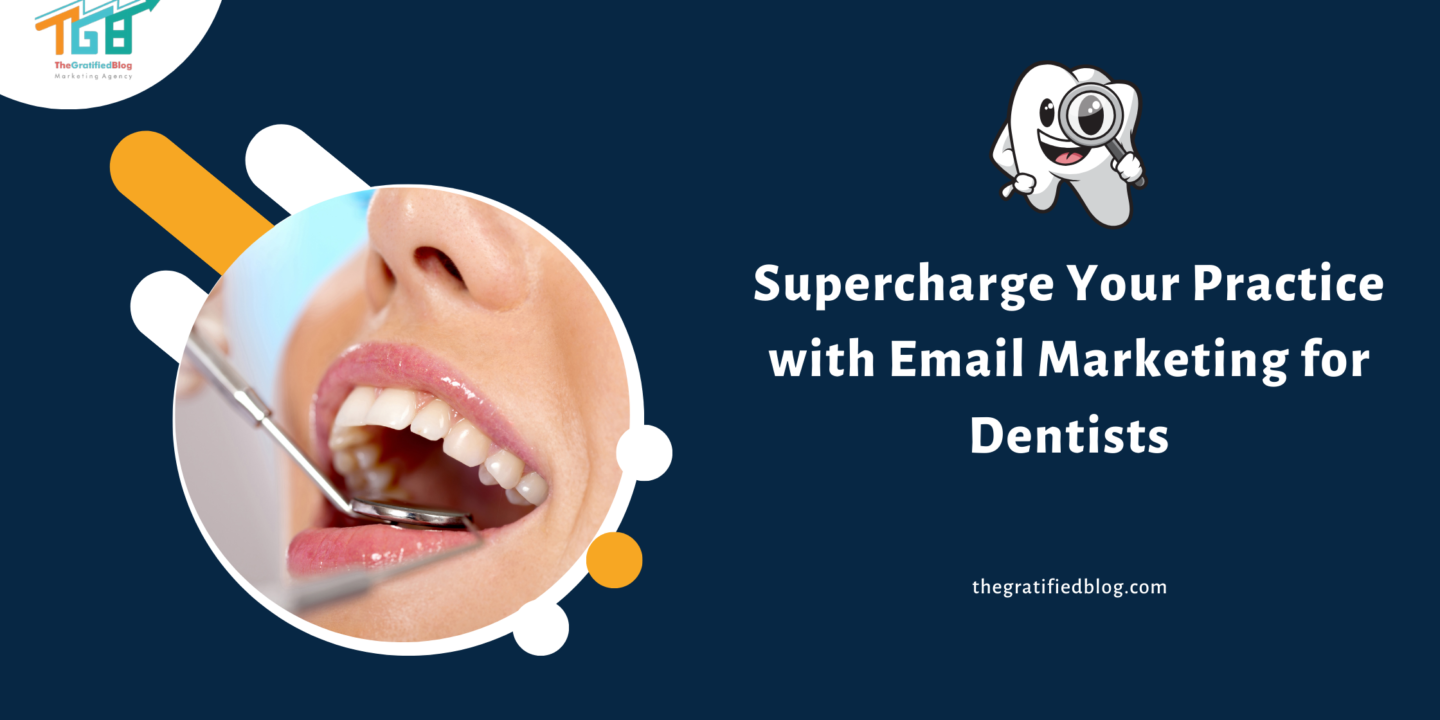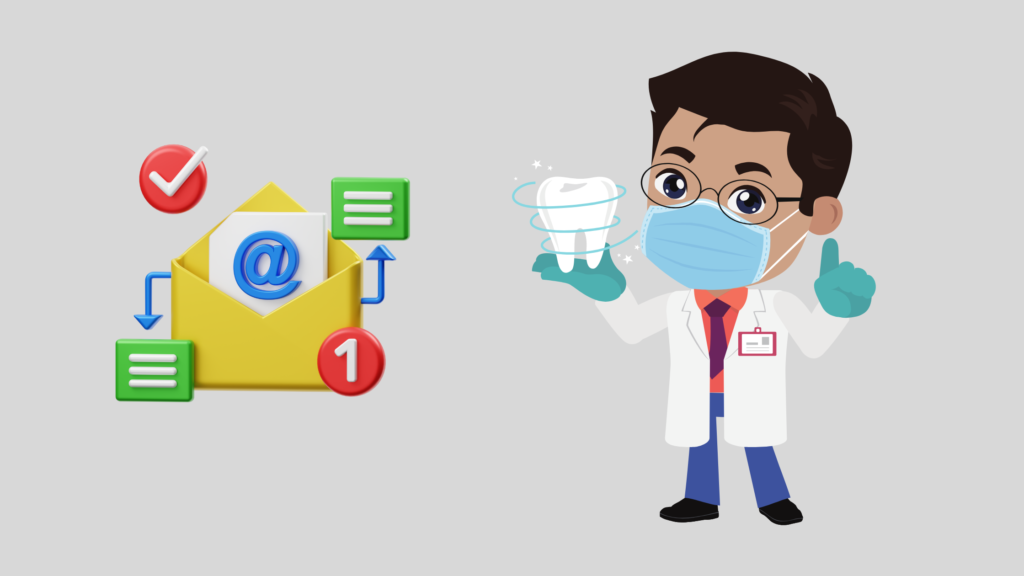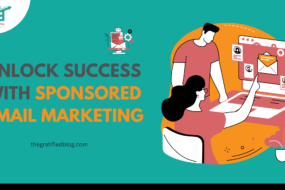
In an age dominated by digital communication, harnessing the power of email marketing has evolved into an essential instrument for businesses spanning diverse industries.
Dentistry, as a healthcare sector, is no exception. “Email marketing for dentists” is not merely a catchphrase but a vital strategy that can significantly impact the success and growth of dental practices.
This comprehensive guide will delve into email marketing tailored to dentists. The topics covered include an in-depth examination of email marketing’s role in the dental field, the significance it holds for dental professionals, a step-by-step guide on how to navigate email marketing in the dental industry, frequently asked questions about email marketing for dentists, and a concluding section to tie it all together.
So, let’s explore how this digital approach can help your dental practice thrive in today’s competitive landscape.
What Is Email Marketing For Dentists?

Email marketing for dentists is a targeted digital marketing strategy encompassing sending informative and promotional emails to patients, potential patients, and other relevant individuals within the dental practice’s network.
This marketing approach is tailored specifically to the dental industry and aims to build and nurture relationships with patients, increase patient retention, and attract new clients to the dental practice.
The Importance Of Email Marketing For Dentists

Here are six critical importance of email marketing for dentists:
- Patient Engagement and Communication: Email marketing allows dentists to maintain regular and direct communication with their patients. They can send appointment reminders, follow-up messages after treatments, and dental care tips, fostering ongoing engagement and trust.
- Cost-Efficient Marketing: Email marketing proves to be more budget-friendly than traditional marketing methods like print advertising or direct mail. Dentists can reach a large audience with minimal expenses, making it a budget-friendly marketing solution for dental practices of all sizes.
- Increased Patient Retention: By sending regular emails to current patients, dentists can encourage them to schedule routine check-ups and preventive care appointments. That not only helps maintain patient health but also boosts retention rates.
- Targeted Marketing: Email marketing allows dentists to segment their patient list based on age, treatment history, or dental needs. This segmentation enables personalized and relevant email campaigns, which are more likely to resonate with recipients and drive action.
- Appointment Reminders and Scheduling: Dental practices can use email to send automated appointment reminders and offer easy scheduling options. That reduces no-shows and ensures that appointment slots are filled efficiently.
- Educational Content Sharing: Dentists can educate their patients about oral health, hygiene practices, and the importance of specific treatments through email newsletters and informative content. That empowers patients with knowledge and the dental practice as a reliable information source
A Comprehensive Walkthrough: Navigating Email Marketing For Dentists
Here’s a step-by-step guide for email marketing tailored explicitly to dentists:
Step 1: Build And Maintain A Quality Email List
Establishing a premium email list forms the cornerstone of successful email marketing for dentists. Your email campaigns will need a quality list to reach the right audience. Below is a comprehensive analysis of this vital stage:
Commence by gathering email addresses from your current patients. You can do this by asking for their email during appointments or through follow-up emails after visits. Always ensure that you have their explicit consent to send marketing emails. Compliance with email marketing regulations, such as obtaining consent under laws like CAN-SPAM in the United States, is vital.
Besides existing patients, leverage various channels to gather email addresses from potential patients. Your dental practice’s website can have sign-up forms where visitors can subscribe to receive emails. Social media platforms can also be used to attract potential subscribers. Additionally, consider having in-office sign-up forms, allowing patients to join your email list during visits.
Consistently refresh and purify your email list to ensure its accuracy. Remove invalid or bounced email addresses promptly. Keeping your list clean and engaged is essential because it ensures that your emails are delivered to the proper addresses and that you use your resources effectively on successful deliveries.
Step 2: Segment Your Audience

Once you’ve established a quality email list, the next step is to segment it. Segmentation involves dividing your list into smaller, more targeted groups based on specific criteria. Here’s a closer look at this step:
Consider factors such as treatment history, age, dental needs, and engagement level to create influential segments. These factors can help you understand your patients better and tailor your emails accordingly.
Utilizing segmented lists allows you to tailor your emails’ content to meet each group’s distinct requirements and interests. For instance, if you have one segment of patients who frequently require preventive care, you can send them dental care tips and reminders for regular check-ups. Another segment interested in cosmetic dentistry can receive information about available treatments.
Personalization leads to improved patient engagement and higher conversion rates. Patients receiving emails addressing their concerns and interests are more likely to open, read, and act on those emails. That can result in more scheduled appointments and treatment bookings.
Step 3: Craft Compelling Email Content

With a segmented list, it’s time to create engaging and valuable email content. The journey begins with crafting subject lines that capture the recipient’s attention and encourage them to open your email.
You should provide information relevant to the recipient’s needs and interests inside the email. That can include dental care tips, details about various treatments your practice offers, success stories, and promotions.
Maintaining a conversational and patient-centric tone is critical to connecting with your audience. Visual elements like images and videos can be incorporated to make your emails more appealing and informative. The ultimate goal is to provide content that addresses your patient’s needs and interests.
Step 4: Design Eye-Catching Emails
After you’ve prepared the content, the subsequent task is to create visually appealing emails. The email’s design captures and holds the recipient’s interest. It’s imperative to ensure your emails are mobile-responsive, as many recipients access their emails on smartphones.
Employ a well-structured and tidy layout with a prominently positioned call-to-action (CTA) button to guide recipients toward the desired action. Maintaining consistent branding by incorporating your dental practice’s logo and adhering to its color scheme reinforces your practice’s identity and professionalism.
Consider conducting A/B testing on various email designs and elements to fine-tune your email marketing strategy. This testing process will help you pinpoint what resonates most effectively with your specific audience, Ultimately boosting the overall efficiency of your email campaigns.
Step 5: Automate Email Campaigns
Once you’ve meticulously crafted an email, the subsequent phase involves automating your email marketing endeavors, facilitating timely communication. It’s advantageous to contemplate the establishment of automated workflows tailored to diverse scenarios.
These scenarios encompass sending welcome emails to new patients, extending birthday greetings, or conducting post-treatment follow-ups. Drip campaigns are an additional facet of automation that merits consideration.
These campaigns are adept at nurturing leads, shepherding them towards scheduling appointments, or embracing recommended treatments. Implementing automation conserves valuable time and guarantees no patient slips through the cracks, ensuring consistent and efficient communication.
Step 6: Monitor And Analyze Performance
The final phase revolves around consistently monitoring your email campaigns’ performance by examining crucial metrics. These metrics encompass open, click-through, conversion, and unsubscribe rates. Your task is to delve into this data to discern what is effective and where improvements are required.
A/B testing proves invaluable during this process as it allows you to refine various elements within your email campaigns. That includes subject lines, content, and the effectiveness of call-to-action (CTA) buttons.
The insights derived from these analytics serve as your compass for adjusting your email marketing strategy. The ultimate goal is to achieve ongoing enhancements and refinements, ensuring your email campaigns remain effective and continuously evolve.
Step 7: Ensure Compliance and Privacy
Indeed, one more crucial step is to consider compliance and privacy. Dental practices must adhere to email marketing regulations and prioritize the confidentiality of patient information, particularly when sharing health-related data. If you operate in the United States, you must acquaint yourself with pertinent legal frameworks, such as the Health Insurance Portability and Accountability Act (HIPAA).
Ensuring your email marketing platform and procedures align with these regulations is imperative. Always make sure to obtain explicit consent before dispatching marketing emails. This commitment to legal compliance and patient data protection is fundamental to building patient trust. It reaffirms your dedication to their privacy and security.
By meticulously following this comprehensive 7-step guide, dental practices can craft email marketing campaigns that are practical and tailored to patient needs, ultimately promoting patient engagement, bolstering brand loyalty, and fueling practice growth.
FAQs On Email Marketing For Dentists
Q1. What Is Email Marketing For Dentists, And Why Do I Need It?
A. Email marketing for dentists is a targeted digital marketing approach that includes sending emails to patients and potential patients to engage, educate, and promote dental services. You need it to build patient relationships, increase retention, and attract new clients to your dental practice.
Q2. How Can I Start Building My Email List As A Dentist?
A. You can start by collecting email addresses from your current patients, using sign-up forms on your website and social media, and offering incentives like dental care tips or special offers in exchange for email subscriptions.
Conclusion
Given your newfound understanding of email marketing for dentists, why not apply these techniques to expand your customer base and boost revenue?
If you still have any questions, please leave them in the comment section. We will be happy to answer you.
Thanks for reading 🙂








No Comments